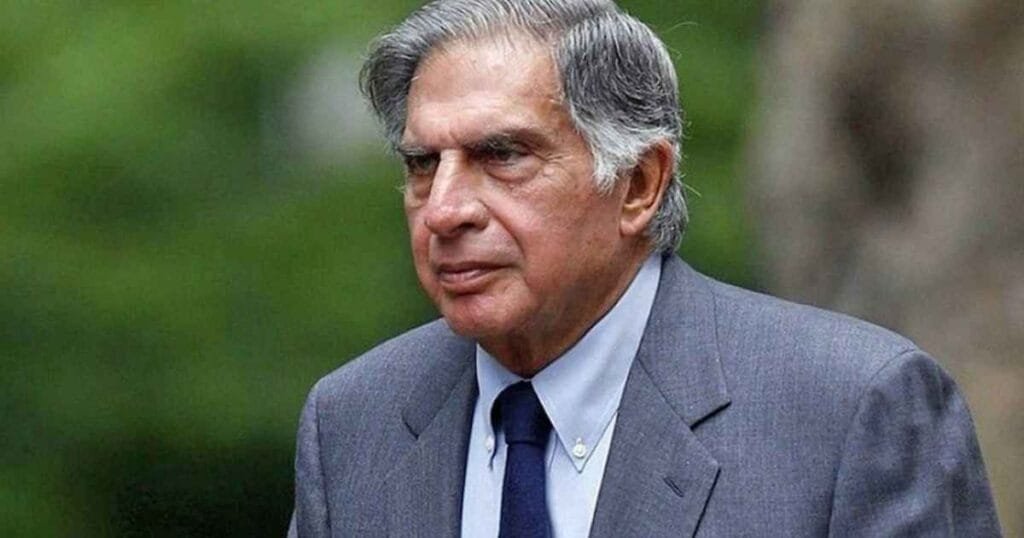Did you know that one of India’s most influential business leaders started his career as an architect? That’s right, Ratan Tata, the man who would go on to reshape Indian industry, began his journey with a bachelor’s degree in architecture from Cornell University. But don’t let that fool you – this isn’t your typical rags-to-riches story. It’s a tale of transformation, innovation, and a whole lot of guts.

Early Life and Education
Childhood and Family Background
Let’s rewind to 1937 in Bombay (now Mumbai). That’s when little Ratan Naval Tata made his grand entrance into the world. But here’s where things get interesting. When he was just a kid, his parents split up, and his grandmother, Navajbai Tata, swooped in to raise him. Talk about a plot twist! This unexpected turn of events would shape Ratan’s values and worldview in ways no one could have predicted.
Educational Journey
Fast forward to the early 60s, and we find our young hero at Cornell University, not studying business as you might expect, but architecture. Yep, you heard that right. Ratan Naval Tata graduated with a bachelor’s degree in architecture in 1962. Who would’ve thought that this seemingly unrelated field would give him the tools to redesign the landscape of Indian business?
Rise to Leadership in the Tata Group
Joining the Family Business
So, what does a fresh-faced architecture grad do next? Join the family business, of course! Ratan dove headfirst into the Tata Group in 1961, even before he finished his degree. Talk about multitasking! He rolled up his sleeves and got his hands dirty in various divisions, including the National Radio and Electronics Company Limited (Nelco). It wasn’t all smooth sailing, but hey, that’s how you learn the ropes, right?
Ascension to Chairman
Now, here’s where things get really juicy. In 1991, Ratan stepped into some pretty big shoes as he took over as chairman of Tata Sons from J.R.D. Tata. Can you imagine the pressure? It’s like being asked to follow a rock star on stage. But our man Ratan? He didn’t just follow the act – he stole the show.
Transforming the Tata Group
Global Expansion Strategy
Alright, buckle up, because this is where Ratan Tata really starts to shake things up. Remember that quiet architect from Cornell? Well, he turned into a business powerhouse, orchestrating some of the boldest moves in Indian corporate history. We’re talking about gobbling up Tetley, the British tea company, in 2000. Then there was the Corus deal in 2007, and let’s not forget the jaw-dropping acquisition of Jaguar Land Rover in 2008. It was like watching India plant its flag on the global business map.
Innovation and Product Development
But wait, there’s more! Ratan wasn’t content with just buying companies – he wanted to innovate too. Enter the Tata Nano, the car that was supposed to put wheels under every Indian family. Sure, it had its hiccups, but you’ve got to admire the audacity of the idea. And let’s not forget the Tata Indica – India’s first home-grown passenger car. It was like Ratan was saying, “Hey world, watch this!”
Financial Growth
Now, let’s talk numbers, shall we? Under Ratan’s watch, the Tata Group didn’t just grow – it exploded. We’re talking about revenues multiplying 40 times over and profits shooting up more than 50 times. It’s enough to make your head spin, right?
Leadership Style and Values
Business Philosophy
So, what made Ratan tick? It wasn’t just about the bottom line for him. He had this crazy idea that companies should actually do good for society. Imagine that! He was all about nurturing young talent, tightening the ship, and making sure the Tata name stood for something more than just profits.
Personal Attributes
Here’s the kicker – for all his success, Ratan remained as down-to-earth as they come. He was known for his humility and kindness, living a simple life that would make most billionaires scratch their heads. Oh, and did I mention he was a licensed pilot? Because apparently, running a global conglomerate wasn’t exciting enough.
Awards and Recognition
National Honors
India didn’t let Ratan’s contributions go unnoticed. They pinned the Padma Bhushan on him in 2000 and followed it up with the Padma Vibhushan in 2008. That’s like getting two Olympic gold medals, but for being an awesome citizen.
Business Accolades
The business world couldn’t stop singing Ratan’s praises either. He was the poster boy for Indian industry, the guy who showed the world that India meant business. Literally.
Post-Retirement Activities
Continued Involvement with Tata Group
Think Ratan slowed down after retirement in 2012? Think again! He came back as interim chairman in 2016, because apparently, old habits die hard.
Investments in Indian Startups
But here’s where it gets really interesting. Post-retirement, Ratan decided to play fairy godfather to Indian startups. He started throwing his weight (and money) behind companies like Paytm and Ola Electric. It was like he was saying, “Alright, kids, show me what you’ve got!”
Legacy and Impact
Contributions to Indian Industry
Ratan Tata’s legacy is nothing short of transformative. He took Indian business from the sidelines and put it center stage on the global platform. He didn’t just raise the bar – he launched it into orbit.
Philanthropic Efforts
But perhaps Ratan’s most enduring legacy? His commitment to giving back. Get this – about two-thirds of Tata Sons’ equity is owned by charitable trusts. It’s like he built a money-making machine and then pointed it straight at society’s problems. Now that’s what I call a power move.
So there you have it, folks. Ratan Tata – the architect who redesigned Indian business, the visionary who saw beyond profits, and the man who proved that you can wear a white shirt every day and still be a total boss. His story isn’t just about success; it’s about redefining what success means. And that, my friends, is worth more than all the tea in Tetley.






